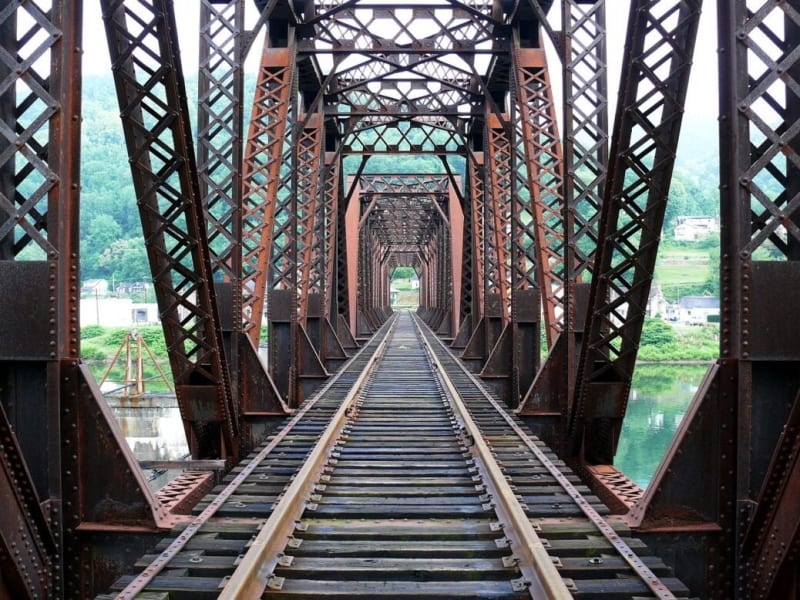Hello,
I'm working on the analysis of am old rail bridge constructed from built up sections - the standard two channels laced together with straps of metal riveted to the toes of the channels, similar to the image I've attached (this isn't the bridge I'm looking at, but its close enough to get an idea). Working on this, I realized that I can no longer remember what reference I based my understanding of the system on. Intuitively (or maybe just based on my aging memory), I've taken the channels to be braced against buckling individually, with no contribution to cross sectional strength made by the strapping. That is, I consider the channels to act as a unit, but I don't allow the strapping to otherwise contribute to the system.
I was wondering how others around the forum think of these built up sections, and if anyone has a reference that discusses the historical and current method of analysis of one of these sections. I'm reasonably confident in my approach, but its really bothering me that I can't seem to locate any supporting documentation either in my old notes or around on the internet.

I'm working on the analysis of am old rail bridge constructed from built up sections - the standard two channels laced together with straps of metal riveted to the toes of the channels, similar to the image I've attached (this isn't the bridge I'm looking at, but its close enough to get an idea). Working on this, I realized that I can no longer remember what reference I based my understanding of the system on. Intuitively (or maybe just based on my aging memory), I've taken the channels to be braced against buckling individually, with no contribution to cross sectional strength made by the strapping. That is, I consider the channels to act as a unit, but I don't allow the strapping to otherwise contribute to the system.
I was wondering how others around the forum think of these built up sections, and if anyone has a reference that discusses the historical and current method of analysis of one of these sections. I'm reasonably confident in my approach, but its really bothering me that I can't seem to locate any supporting documentation either in my old notes or around on the internet.

